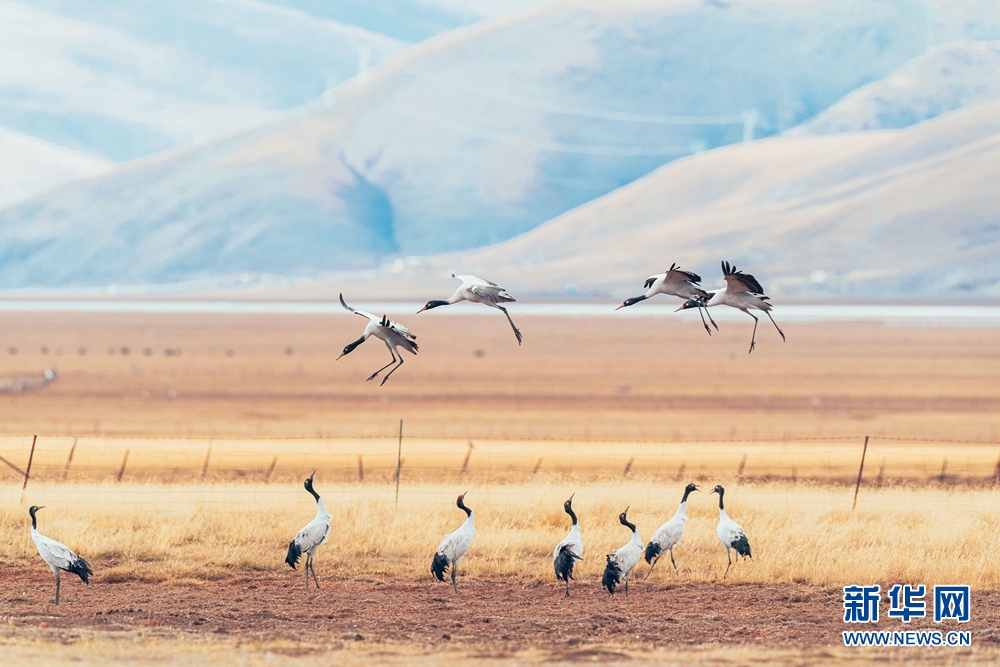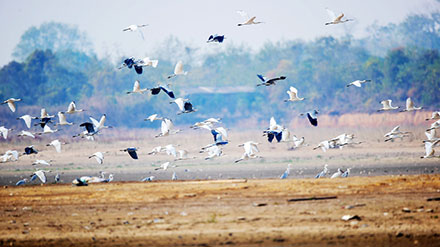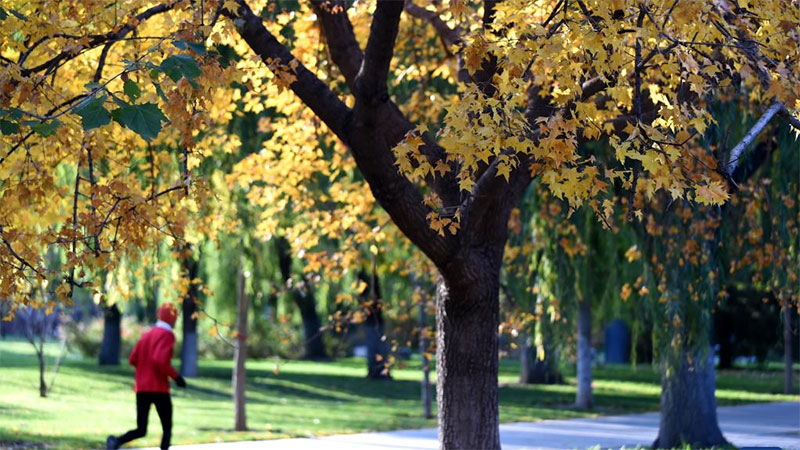China's first breeding base for black-necked cranes sees nearly eightfold increase in population
China's first breeding base for black-necked cranes has seen the population of the rare bird increase nearly eightfold since its inception in 1986, according to a management station at the nature reserve on Nov. 1, 2022.

Photo shows black-necked cranes in the Longbao National Nature Reserve in northwest China's Qinghai Province. (Photo courtesy of the management bureau of the Longbao National Nature Reserve)
The Longbao National Nature Reserve in northwest China's Qinghai Province, the first breeding base for the bird species and also the first national nature reserve in the province, saw the population of the species grow from only 22 to 180 today.
Covering an area of 100 square kilometers, the nature reserve is a major breeding base for black-necked cranes and bar-headed geese, and is home to the most diverse range of bird species in the source of the Yangtze River.
Over the past 10 years, the population of bar-headed geese in the nature reserve has increased from 1,000 to over 10,000. Many new endangered species, such as black storks and birds under first-class and second-class state protection in China, have appeared in the nature reserve.
Photos
Related Stories
- 27 missing after floating crane sinks in south China
- Female volunteer makes selfless effort to build ideal habitat for white cranes in E China’s Jiangxi
- Population of black-necked cranes exceeds 10,000 in Tibet
- Tibetan villager devotes himself to safeguarding black-necked cranes for seven years
- Story of a family devoted to protection of red-crowned cranes
- Migrating gray cranes seen at Agamon Hula Conservation Lake in Israel
- Endangered crane population surpasses 10,000 in Tibet
- Cranes welcome the arrival of spring in NE China's nature reserve
- Measures taken to protect habitat of black-necked cranes in Zhaotong, Yunnan
- Rare black-necked cranes wintering in Yunnan
Copyright © 2022 People's Daily Online. All Rights Reserved.









